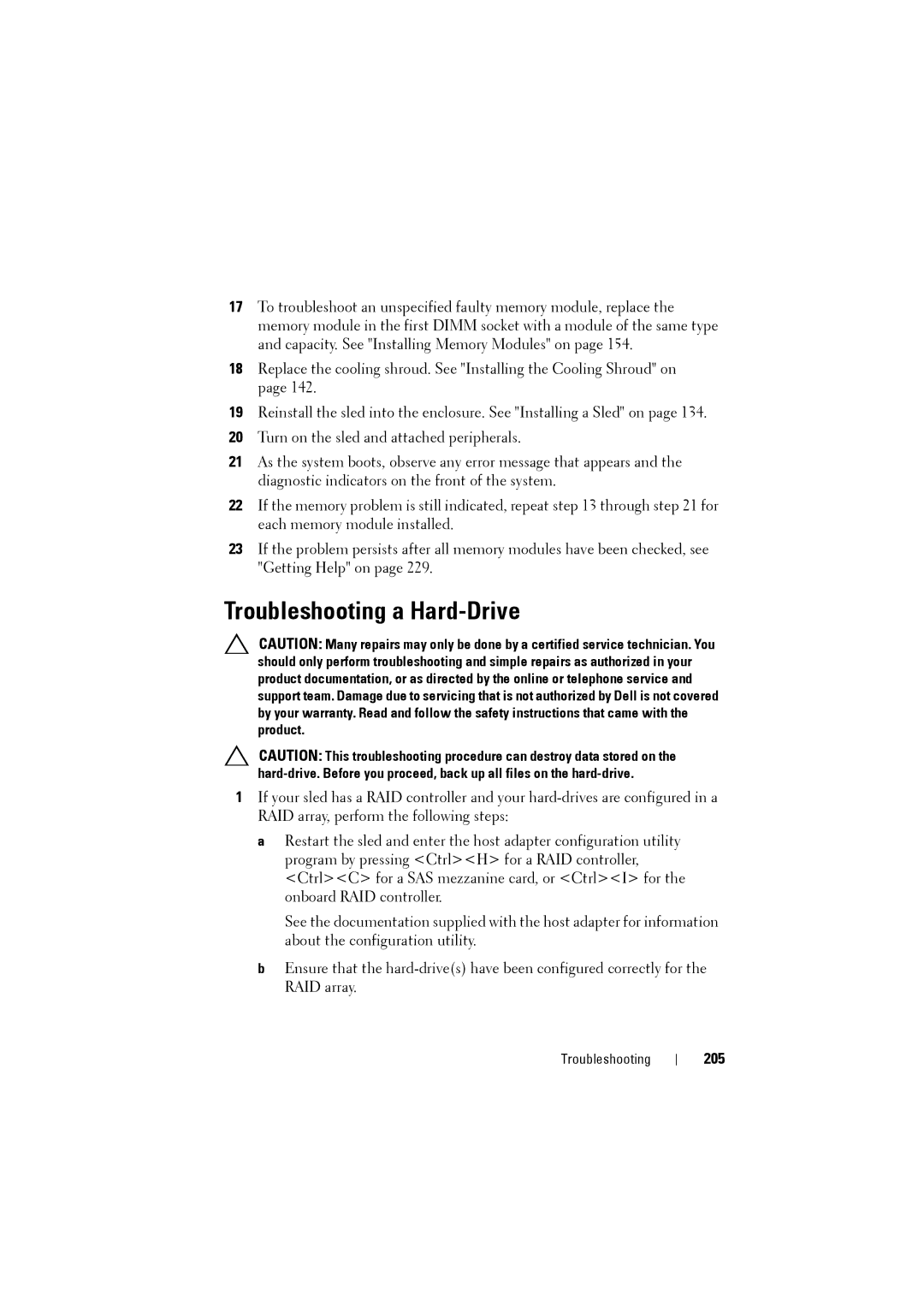
17To troubleshoot an unspecified faulty memory module, replace the memory module in the first DIMM socket with a module of the same type and capacity. See "Installing Memory Modules" on page 154.
18Replace the cooling shroud. See "Installing the Cooling Shroud" on page 142.
19Reinstall the sled into the enclosure. See "Installing a Sled" on page 134.
20Turn on the sled and attached peripherals.
21As the system boots, observe any error message that appears and the diagnostic indicators on the front of the system.
22If the memory problem is still indicated, repeat step 13 through step 21 for each memory module installed.
23If the problem persists after all memory modules have been checked, see "Getting Help" on page 229.
Troubleshooting a Hard-Drive
CAUTION: Many repairs may only be done by a certified service technician. You should only perform troubleshooting and simple repairs as authorized in your product documentation, or as directed by the online or telephone service and support team. Damage due to servicing that is not authorized by Dell is not covered by your warranty. Read and follow the safety instructions that came with the product.
CAUTION: This troubleshooting procedure can destroy data stored on the
1If your sled has a RAID controller and your
a Restart the sled and enter the host adapter configuration utility program by pressing <Ctrl><H> for a RAID controller, <Ctrl><C> for a SAS mezzanine card, or <Ctrl><I> for the onboard RAID controller.
See the documentation supplied with the host adapter for information about the configuration utility.
bEnsure that the
Troubleshooting
